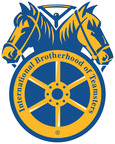
To Ease Energy Transmission Gridlock, States Look to Grid-Enhancing Technologies
Advanced solutions can help meet demand, increase renewable energy use, and save ratepayers money
WASHINGTON, June 27, 2024 /PRNewswire/ — The following is provided by Maureen Quinlan, a senior officer, and Yaron Miller, a senior manager with The Pew Charitable Trusts’ energy modernization project.
The aging U.S. electric grid is strained by increasing demand from economic growth and electric vehicles, severe weather disruptions, and more. One result is a congested transmission system that often cannot serve consumers with the lowest-cost electricity—typically generated from renewables such as solar and wind—and must instead tap more expensive sources. This congestion increased consumers’ bills by an estimated $20.8 billion in 2022.
Grid-enhancing technologies (GETs) are a promising near-term solution and could ease a backlog of an estimated 2,600 gigawatts of power—95% of which is from solar, wind, or battery projects—that is ready to flow to consumers. So far in 2024, lawmakers in at least 10 states have considered policy options to evaluate and promote GETs. In addition, the White House in May announced a new initiative with 21 states to collaborate on use of these innovative solutions to modernize the grid.
What are GETs?
GETs are technologies that allow transmission lines to carry more power and are typically deployed faster and at a lower cost than new lines and substations. Some common GETs are:
Dynamic line ratings (DLRs): Transmission lines have a “rating” that sets the maximum electricity flows allowed on a line. DLR uses sensors to calculate the rating based on real-time weather conditions. This allows grid operators to safely boost the rating—and line capacity—when conditions allow.Advanced power flow controls (APFCs): APFCs are modular devices that allow grid operators to direct and balance electricity flows to avoid congested areas of the grid.Topology optimization (TO): TO is a software technology that allows grid operators to reroute power flows to avoid congested areas.
One analysis showed that DLRs yield average increases in transmission capacity of more than 33% in summer and 19% in winter. These capacity boosts can make room on the grid for renewable energy projects to come online. One study found that GETs projects across five states could help connect 6.6 gigawatts of new renewable energy to the grid; this could lead to a corresponding drop in fossil fuel emissions of 3.5% in 2027, equivalent to roughly 12 million tons of CO2. DLRs can also have significant safety and reliability benefits because they give utilities accurate readings of real-time conditions of lines and how much electricity they can carry.
GETs save customers money by reducing grid congestion and allowing for uptake of lower-cost energy resources. As a result, these technologies can often pay for themselves within six months of becoming fully operational and could save consumers an estimated $2 billion to $8 billion annually.
State policy approaches
Despite their many benefits, GETs have not yet been broadly adopted by U.S. grid operators, in part because of their relative newness and also because of utility incentive structures that favor large capital projects over improved operations and efficiency. Still, new state activity is encouraging. Examples include:
Study bills
Lawmakers in Connecticut, Maine, and Maryland have considered studying the potential deployment of GETs, resulting in reports that would guide policy decisions. In Maine, a recently passed law (S.P. 257/L.D. 589) allows those findings to inform utility rate-making and grid planning proceedings before the Maine Public Utilities Commission, the state’s regulatory oversight authority.
Utility planning requirements
Most states direct some or all utilities to regularly develop integrated resource plans to outline new investments in energy infrastructure, generation, and transmission. This year, California, Minnesota, South Carolina, Utah, and Virginia have either passed or reviewed legislation to require utilities to evaluate GETs within those resource plans or related proceedings.
Minnesota’s recently enacted law requires utilities to identify areas of existing or anticipated congestion, assess GETs to mitigate those trouble spots, and plan to implement them if they are cost-effective.
Incentives
Lawmakers in New York have proposed legislation to require utilities to consider GETs in resource planning and would allow utilities to financially benefit from cost-effectively deploying these technologies.
Although not a replacement for much-needed investment in new transmission lines, GETs and related technologies can play an important role in creating a modern, reliable grid. As more states take action, ratepayers nationwide will benefit.
More information at https://www.pewtrusts.org/energymodernization.
Contact:
Monique O’Grady
[email protected]
View original content to download multimedia:https://www.prnewswire.com/news-releases/to-ease-energy-transmission-gridlock-states-look-to-grid-enhancing-technologies-302183748.html
SOURCE The Pew Charitable Trusts






